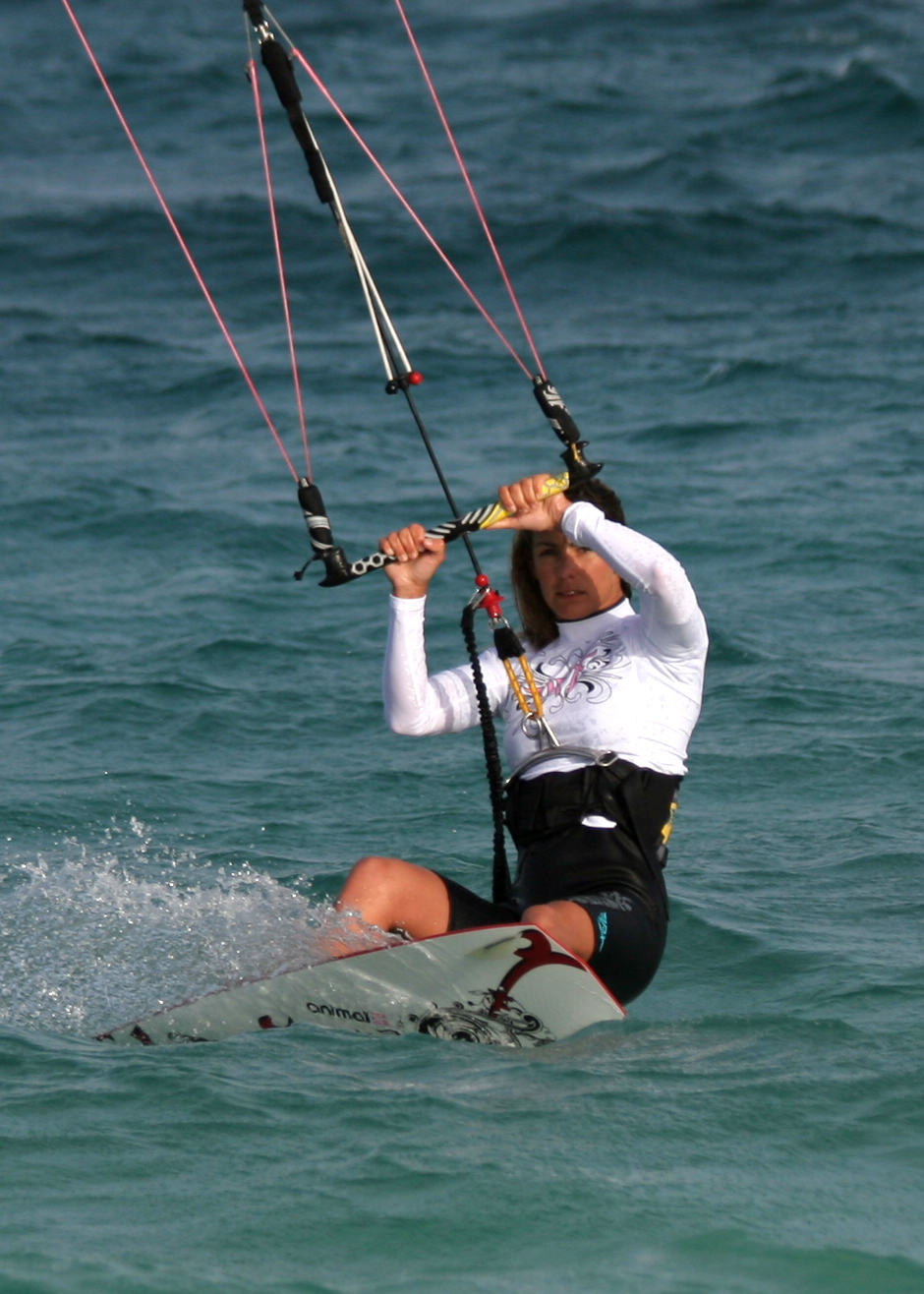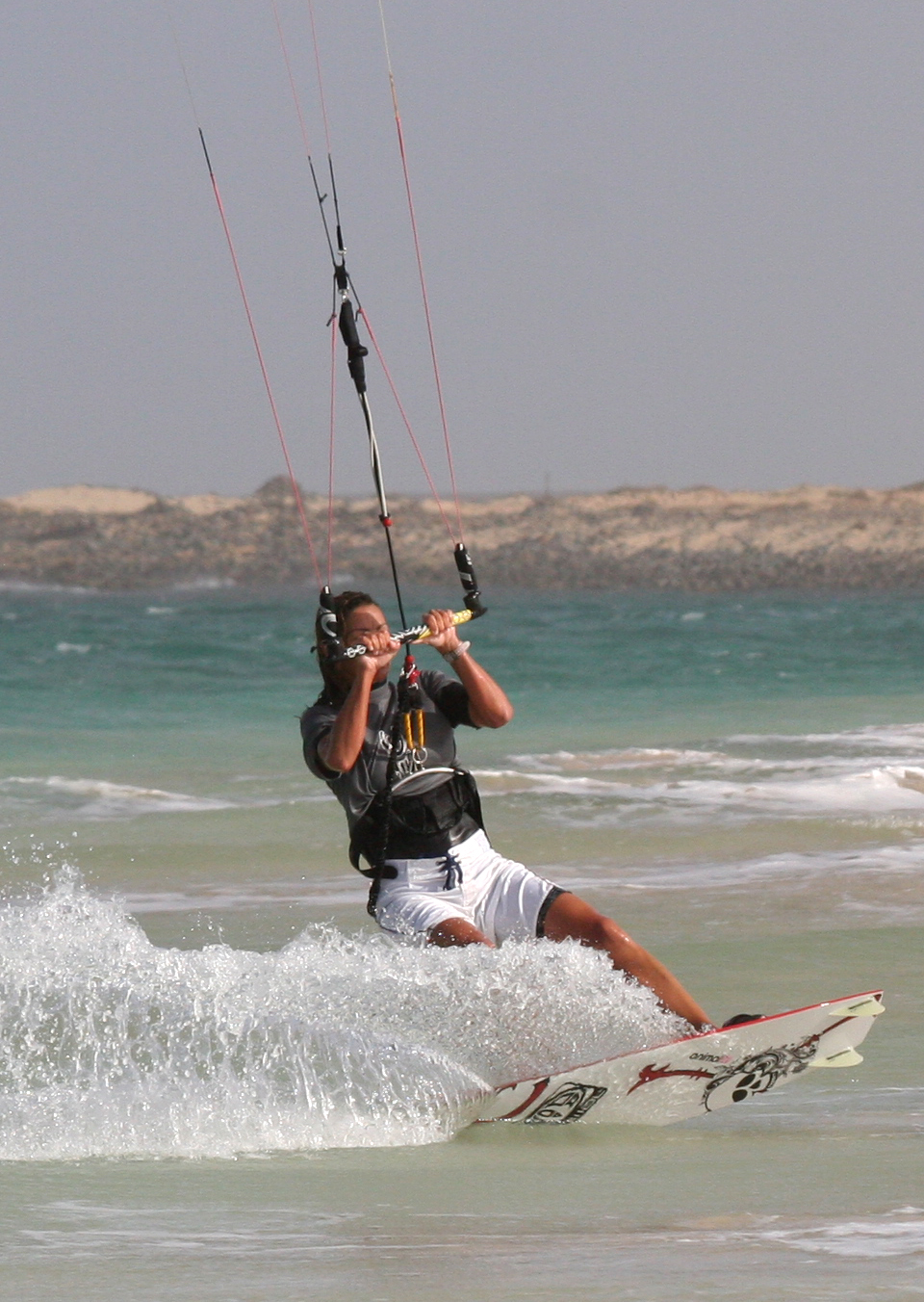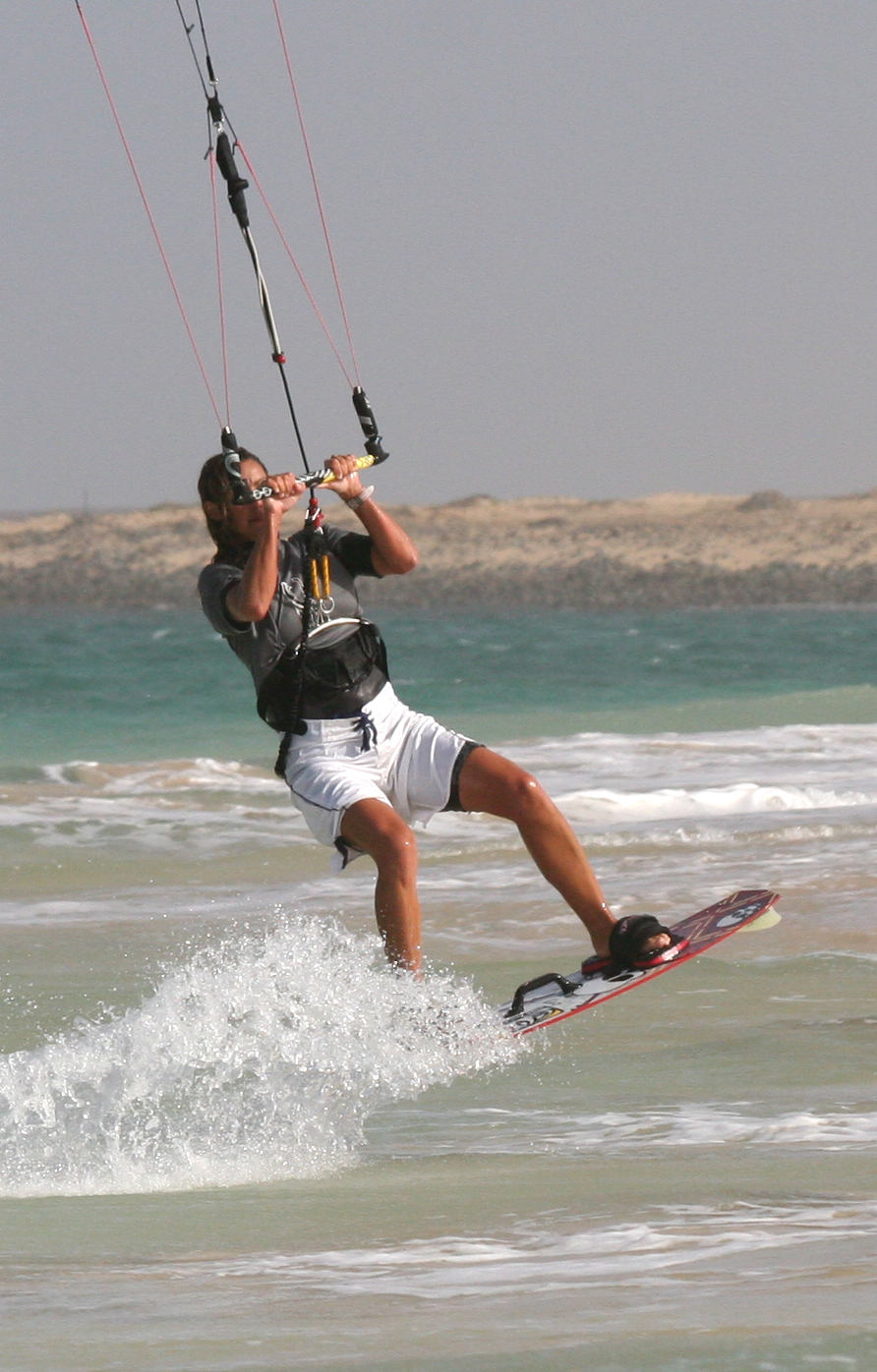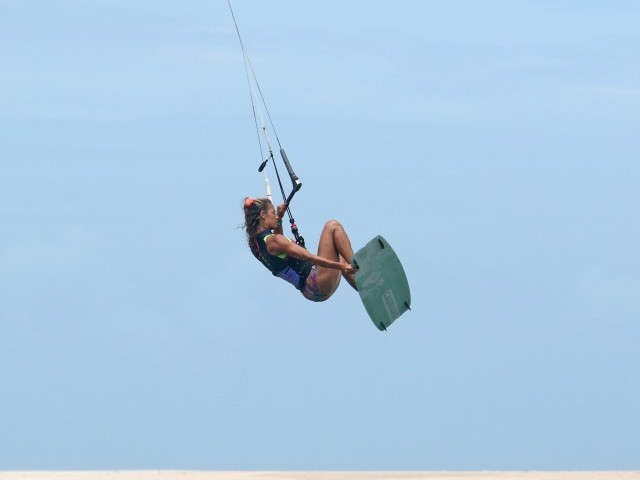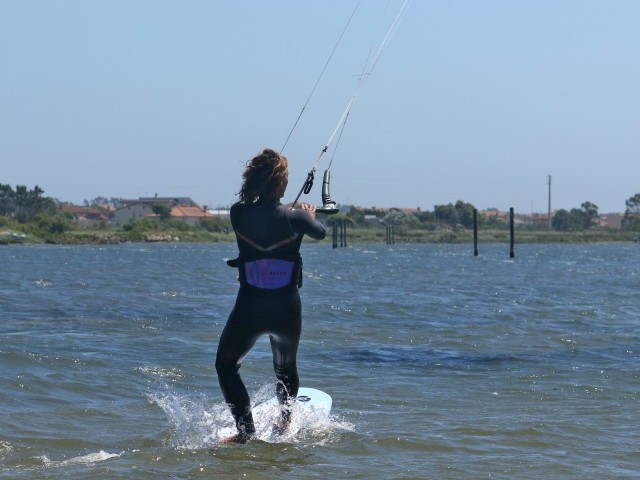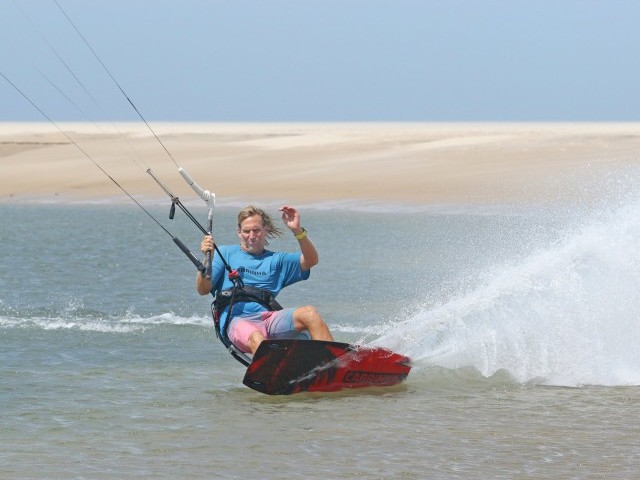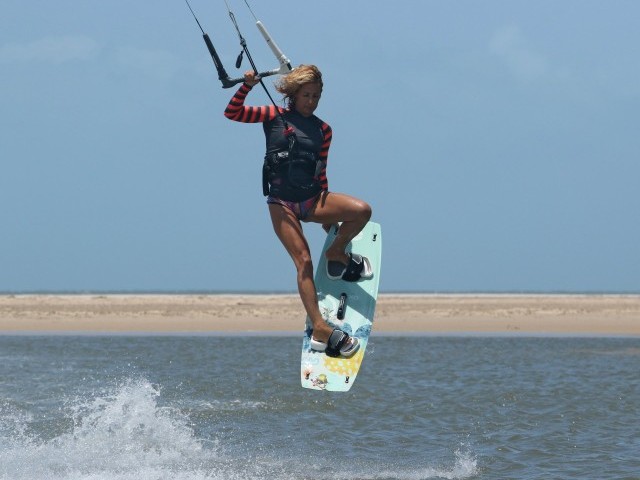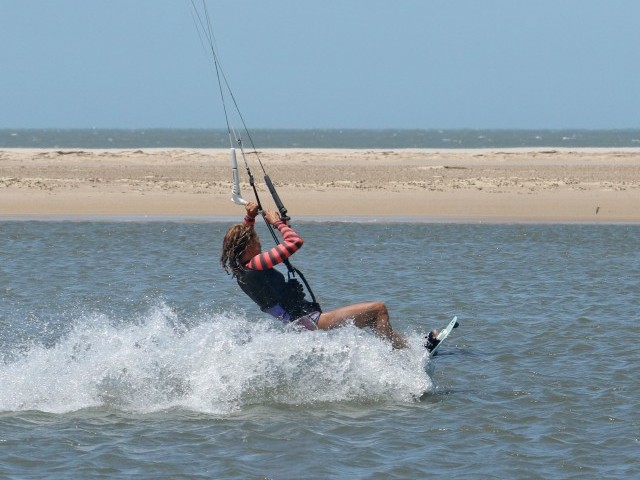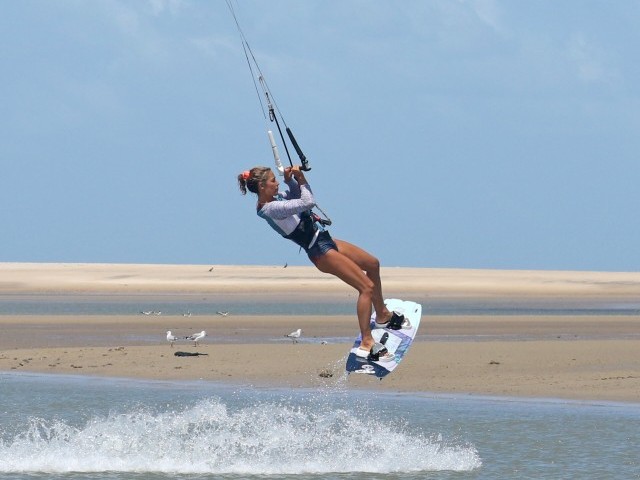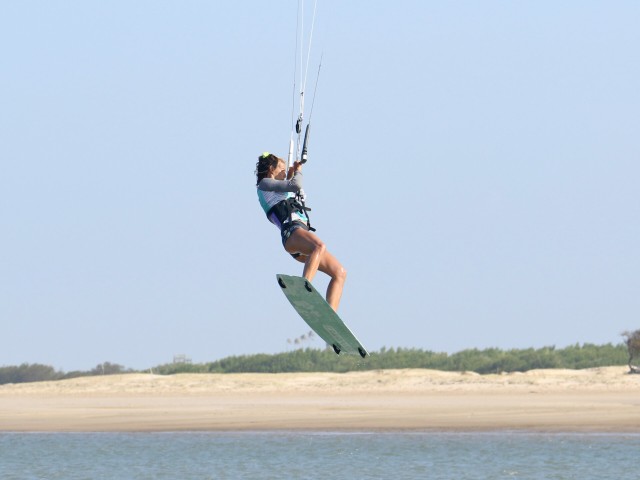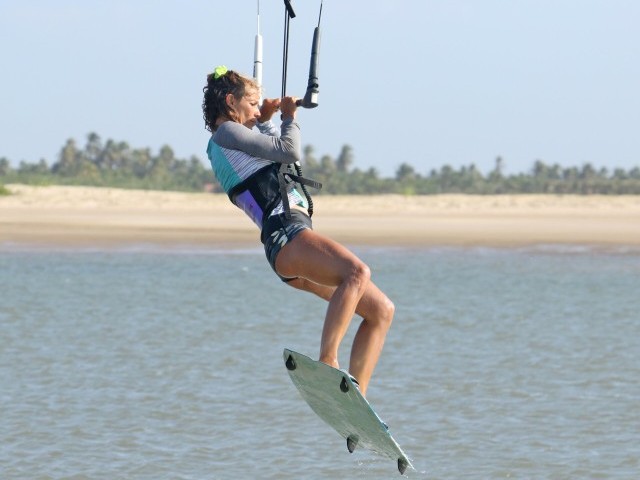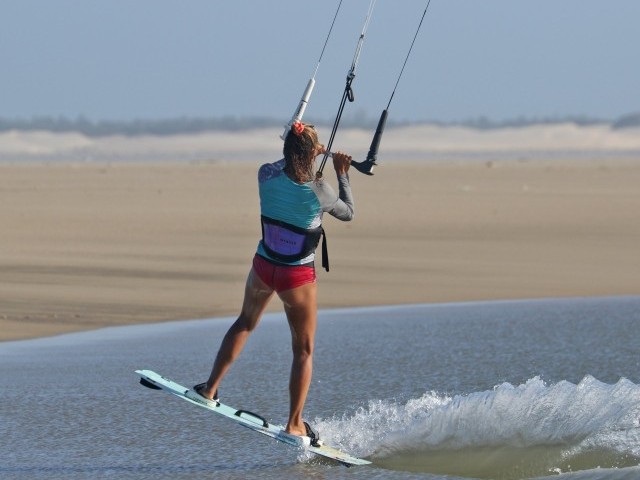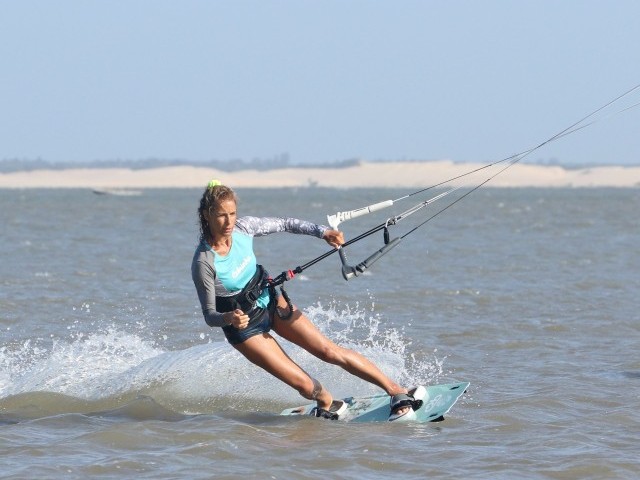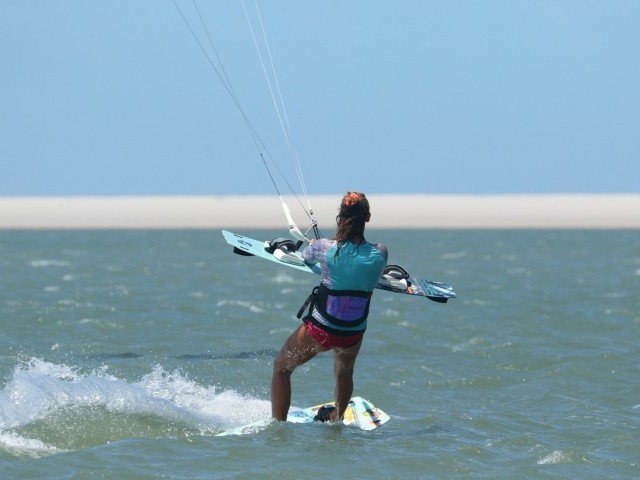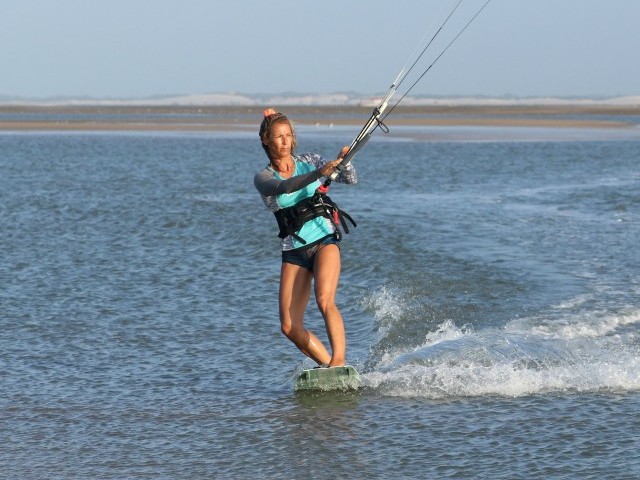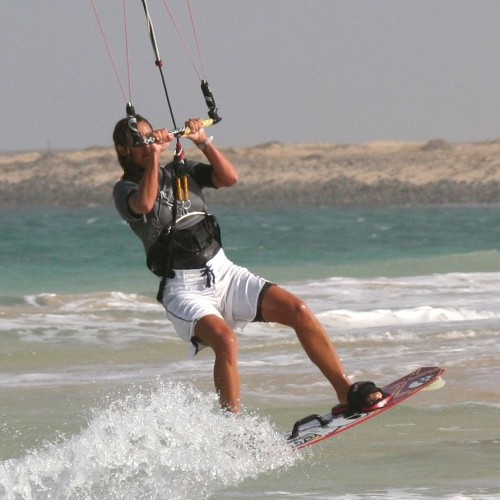
Air Gybe
Technique / Beginner
Introduction
The Air Gybe done well is the King of smooth: just freezing mid flight, maybe throwing in a cheeky grab, whilst hanging in the wind then casually changing direction before powering off back out to sea. Once fully mastered even the biggest air can be a mere method of turning, and any obstacle a plant.
If you have conquered the slide turn and are starting to see daylight under your board, mastering this transition will not only improve you kite skills and lead into a bevy of other transitions. But it will also teach you a subtle variation of popping which we call extension. One word of warning though, people following you on the water will not be expecting you to turn, so give yourself plenty of space.
So What Is It?
The Air Gybe in it most primitive form is a slide turn without the slide, so nothing too new! Rather than the board being forced to skid out at the back, it is forced onto its edge, and therefore when the kite moves up, you go with it. If this sounds familiar its probably because you’ve nailed or nearly nailed a few of these by accident. In it’s more advanced form it’s a jump which you land going in the opposite direction to which you took off.
Why is it Not a Jump?
When you jump you travel forwards and downwind. Even if you sheet the bar out, you have a chance of landing and sailing away. In the air gybe you have two main important differences.
Firstly in order to keep control and not go flying off downwind and forward you need to shed a lot of speed. To do this you need to edge before sending the kite (as opposed to sending then edging for a jump). However if you go too slowly you will stop, a very fine line.
Secondly you need to keep tension on the steering lines throughout the jump so that you can dive the kite for landing, because you will pendulum out from underneath your kite. This requires you to take off early, before the kite has gone behind you, to minimise the amount you swing. As simple as this may sound the trick is jumping off an edge, rather than a flat board, which would kill the power in the kite.
It’s Spring Time
Noel Coward fans this one is for you. Going early is the secret. By going early we mean that you have to physically jump up before the kite pulls you up, pre empting the take off. This way you will be airborne when the kite is directly above you.
If you stand and try to jump up, what are you doing? You are coiling you legs, by bending them, so that you can then extend by exploding upwards. The last parts of your body to leave the ground are your toes. If you were to try this on the water, as soon as you bend your legs, you will naturally come up over the board, roll it flat and loose all tension in the lines. The result in the air gybe, or jump for that matter, would be that the kite will have travelled past twelve o’clock and gone way behind you before pulling. This way you may get air, but there will be zero chance of getting the power back in the kite and sailing away without a very wet bottom and a fairly long pause.
The trick to jumping up, off the board, is to keep the board on its edge even whilst we coil and to extend through our heels, rather than off the balls of our feet and jump up but away from the kite. So how do we do this?
The Body
The legs and hips are our focus parts. In Pic A Karine is coiled and ready to spring. You can see how her front leg is extended whilst her back leg is bent. To get into this position Karine has dropped her hips back over her back foot, literally just moving them a couple of inches towards the rear of the board will suffice. Now she can really drive through her back foot, which forces the board to turn even more upwind. Because the front leg is extended, there is little chance of her rolling up over the board, as it is kept at legs length, very much between her and the kite so she can lift her upper body, ready to extend, without the fear of loosing her edge. From this position all she needs to do is kick hard off her back leg and she’ll be airborne.
The Kite
If you try to use the kite to pull you, it will also make the early jump easier. The aim here is to start with the kite higher than for a normal jump, and not to send it as far behind, but to be just as aggressive with the bar. A common problem is to drift the kite slowly upwards, which can result in no pull whatsoever. In preparation for the air gybe you may drift the kite up to either 12:30 or 11:30 but then you must commit, stop looking at the kite and send it hard. Once the kite is moving you have to anticipate the pull, so that as soon as you feel some lift, you immediately jump up and level the bar (Pic B).
The Big Freeze
The next step is keeping the kite above you and maintaining full control of it by keeping the bar pulled in and level (Pic C). It is at this moment that the temptation to let the bar out may overcome you. By freezing with our hands to hips and knees to hands, even if you swing, you’ll stay in control of the kite, which allows you to dive the kite in the new direction and land with the board pointing downwind.
Following Sequence 1
- Pic 1. Karine approaches comfortably on her edge, has a butchers around her, moves her kite slowly to 11:30 and starts to edge harder, turning more upwind and driving off the back foot.
- Pic 2. She now suddenly sends the kite back.
- Pic 3. As the kite starts to move, she drops her hips low and moves them back. This extends her front leg whilst allowing her to bend the back leg whilst still driving through her back heel.
- Pic 4. With the kite starting to pull from above, Karine pulls her hands to hips, to level the bar and explodes upwards off her back leg. As her front leg is extended she can only use her rear leg to jump.
- Pic 5. As she extends the kite continues to lift her. Karine continues to look in the direction which she is going.
- Pics 6, 7 & 8. On the way up, Karine keeps the bar locked down on the chicken loop, brings her knees up and continues to look forward. She will keep this position until she reaches the apex of the jump.
- Pic 9. At the height of her jump Karine will have swung forwards away from under the kite. Now as she starts to descend she turns to face the new intended direction of travel, all the time keeping the bar right in to keep her steering lines tight.
- Pic 10. Now that she has her balance facing her new way, and knowing that she’ll be touching down soon, she dives the kite hard with her new front hand.
- Pic 11. With tension in the lines the kite starts to pull Karine back the other way and downwind.
- Pic 12. Just before touching down Karine drops her legs down underneath her and aims the board slightly downwind, following the pull of the kite.
- Pics 13 & 14. Karine lands pointing off the wind, tail first and on a flat board. As she is not on an edge the lands smoothly, pulled by the power in the kite. Yeeha!
Top Tips
It is really quite tricky to pull off a tasty looking air gybe if you are not powered up.
The faster you enter an air gybe, the more you will pendulum away from the kite.
To land going in the other direction you really need to dive the kite very hard. This also means landing with speed, so point the board off the wind.
As your confidence increases try going higher. With more height you must redirect the kite above you whilst in the air, before freezing and waiting for the dive.
Landing downwind might feel more comfortable on one side that the other, so try landing toe side, with your best foot forward on your weaker side.
Once you are an Air Gybe Master, new variations like throwing rotations and kite loops are just steps away. And your newfound extension will help for a whole host of other kiting tomfoolery.
This technique article was in Issue 3 of IKSURFMAG.
Related
By Christian and Karine
Christian and Karine have been working together as a coaching team, running improver to advanced kitesurfing clinics since 2003.







